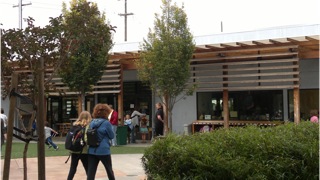Annotating Educational Resources

On June 9-10, the Monterey Institute for Technology and Education (MITE), Hypothes.is, and Lumen Learning convened a 2-day summit focused on the annotation of open educational resources (OER). The meeting’s principal organizer was Ahrash Bissell of MITE.
Education is a compelling environment for annotation because the practice of annotation in educational settings has value for learners beyond merely enriching knowledge. The meeting was supported by a grant from the William and Flora Hewlett Foundation. Over 25 attendees attended from organizations ranging from the State of Maine to Creative Commons.
This meeting is one of a series planned to explore the opportunities and barriers for fostering greater collaboration in solving shared technology challenges for open education. This meeting focused on annotation and metadata challenges and solutions for OER, and generating or integrating tools that permit more distributed and participatory mark-up. Wide-ranging support for the generation of open educational content has existed for years, but questions about appropriate metadata standards, protocols, and tools for facilitating search, discovery, and engagement have remained under discussion without satisfactory resolution. With the rise of lightweight web standards and protocols such as open annotation, we believe the necessary elements (not just technologies) are coalescing to enable us to make headway.
The promise of annotation lies in its ability to create a richer and more interactive environment for learning. This support ranges from the point of creation of educational materials through aiding editing workflows for content authors, to active use in pedagogy. Annotation can enable classroom or workgroup-based student-student assistance, and it can also create a framework enabling the creation and review of assignments by teachers for their students. Perhaps most intriguingly, annotation is a “write-back” technology, enabling students to provide direct feedback on the utility or educational content and their use, providing a means to suggest improvement and clarification.
There are tensions in web-based annotation applications that are particularly prominent in open educational resources. For example, one conceptual challenge with annotation has always been the use-distinction between annotation as a means of personal discovery and organization, versus annotation as a social layer within the web, enabling conversation and analysis. If objects are likely to remain relatively static in the original context in which they were first published, then annotation requirements are akin to building a sophisticated card catalog for the web, supporting contemporary services such as linked data. In contrast, if the educational content is capable of continual change by design over its lifetime, then annotation must be particularly sensitive to the context of the use of educational materials. For textual materials, this would include support of copyediting functions. Further, even items that are not evolving might be dynamic, representing interactive modeling or input-driven simulations, and there remain challenges to annotating specific “states” within these environments. For example, one might want to edit a simulation given a specific set of variable inputs, at a specific point — such as protein cutting under the action of enzymes.
There’s an even more fundamental conceptual distinction between annotation supporting students, as opposed to facilitating discovery of OER and curriculum development for teachers. These groups have very different needs in how annotation is presented or integrated into services, from being a design and management tool to one aiding engagement and learning. Obviously much deeper investments need to be made in querying these constituencies and in the case of K-12, their guardians, to determine what best aids student comprehension and the development of analytical capacity. Because K-12 and college teaching professionals and State-level administrators are easier to convene in professional meetings than young students, more technical work has been accomplished in data description and discovery then in elucidating how more evanescent annotation might empower the learning process.
One of our hopes is that the growing ubiquity and integration of annotation into the web, both by incorporation into web sites as well as the eventual re-folding of software into the browser itself, might ultimately make dialogue with educational content unconscious in the act of engagement, but conscious in its application and material. We look forward to exploring and helping to build education initiatives.